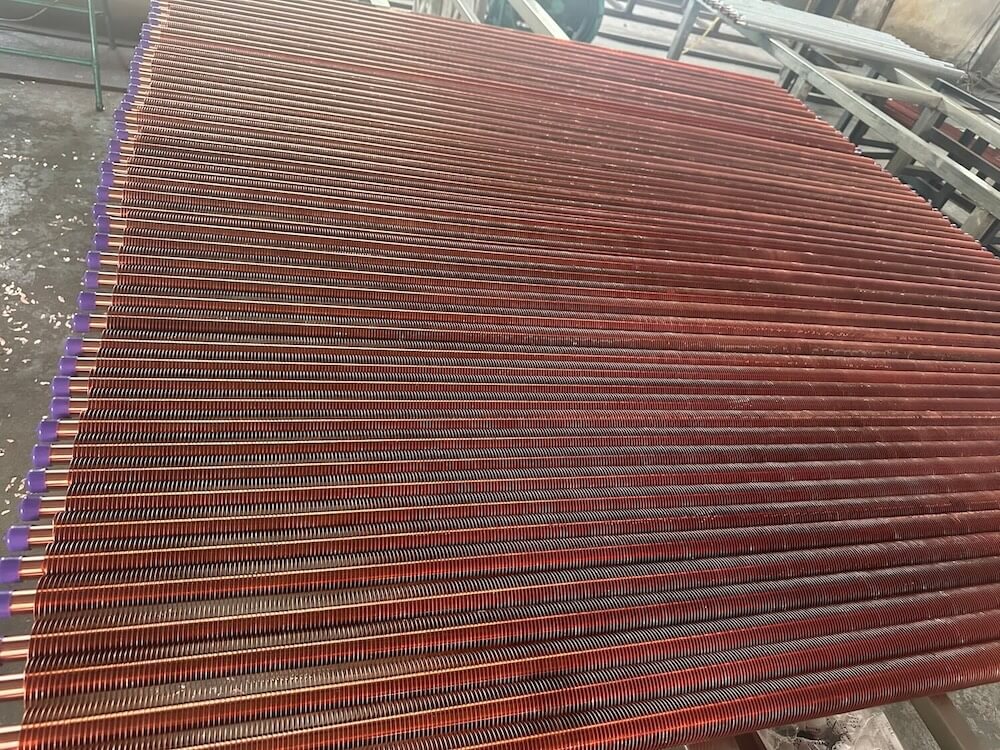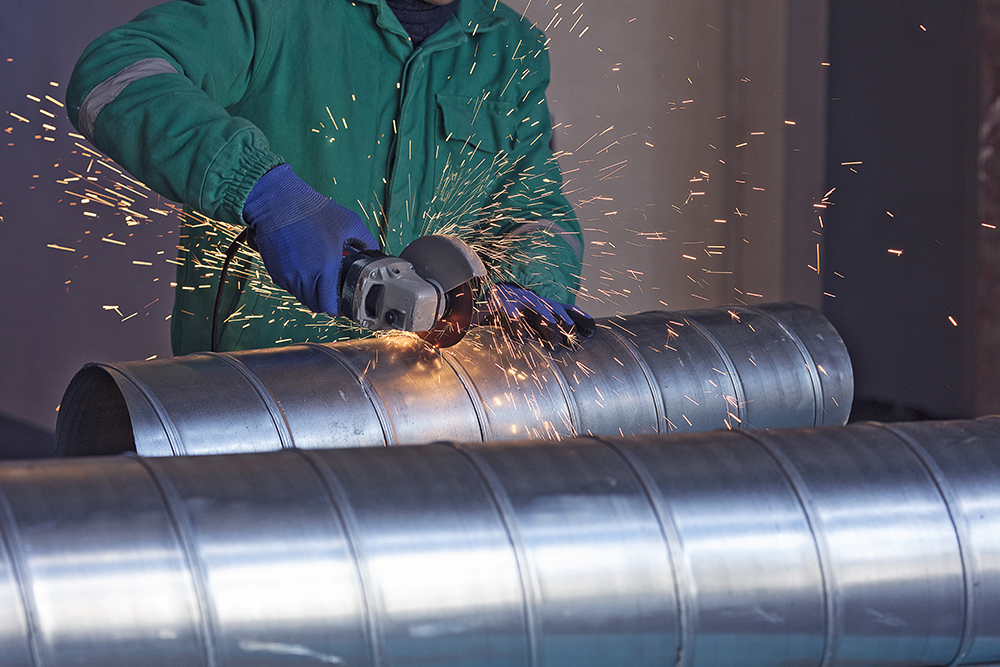Finned tubes are widely used in heat exchange systems, from HVAC units and refrigeration systems to industrial boilers and power plants. By adding fins to the outer surface of a tube, heat transfer efficiency increases, making finned tubes a valuable component in many cooling and heating applications. However, like any technology, finned tubes have both advantages and disadvantages that should be considered to ensure they are the best choice for a particular system. This guide explores the pros and cons of using finned tubes to help you make an informed decision.
“Finned tubes enhance heat transfer by increasing surface area, making them ideal for compact systems. However, they may require more maintenance and can introduce airflow resistance in some applications.” Knowing the benefits and drawbacks of finned tubes can help optimize your heating or cooling system.
Advantages of Using Finned Tubes
Finned tubes offer several key benefits that make them highly efficient and widely used in heat exchangers. Here are the main advantages:
1. Enhanced Heat Transfer Efficiency
One of the most significant advantages of finned tubes is their ability to improve heat transfer efficiency by increasing surface area.
- Increased Surface Area: The fins attached to the tube increase its overall surface area, allowing more heat to be exchanged between the tube and the surrounding environment. This makes it easier to maintain desired temperatures and reduces the need for larger equipment.
- Faster Temperature Control: With more surface area for heat exchange, systems that use finned tubes can cool down or heat up more rapidly. This is especially valuable in applications like HVAC systems, where efficient temperature control is essential.
In systems that require high heat dissipation or efficient cooling, finned tubes offer a way to achieve these results without a bulky design.
2. Compact and Space-Efficient Design
Finned tubes enable a compact system design by maximizing heat transfer in a smaller footprint, which is especially beneficial for systems with space constraints.
- Efficient Use of Space: Finned tubes achieve high heat transfer rates in a compact space, allowing designers to create smaller, more space-efficient systems.
- Ideal for Tight Spaces: Systems like automotive radiators, HVAC units, and portable air conditioners benefit from this compactness, as finned tubes allow them to be more compact without sacrificing efficiency.
In industries where every inch of space matters, such as automotive, aerospace, and residential cooling, finned tubes help maintain high efficiency without taking up extra room.
3. Energy Efficiency and Cost Savings
By increasing heat transfer efficiency, finned tubes can help reduce energy consumption, which in turn lowers operational costs.
- Reduced Energy Demand: Since finned tubes facilitate faster heat transfer, they allow systems to reach target temperatures more quickly and maintain them with less energy. This reduction in operational time lowers power requirements and helps save on energy costs.
- Lower Operational Costs: With improved efficiency, systems using finned tubes can operate at reduced power levels, which leads to long-term cost savings on energy bills and maintenance.
For applications like industrial boilers, power plants, and large HVAC systems, finned tubes offer a cost-effective solution that helps reduce energy usage and operational expenses.
4. Versatility Across Applications
Finned tubes are incredibly versatile and can be used across various industries and environments, from residential air conditioning to industrial heat exchangers.
- Adaptable to Different Settings: Finned tubes can be customized for specific environments and are suitable for both air-cooled and liquid-cooled systems.
- Wide Range of Applications: Industries like automotive, power generation, oil and gas, and HVAC rely on finned tubes for efficient heat transfer, making them an adaptable solution for numerous heating and cooling needs.
The versatility of finned tubes ensures they are suitable for nearly any application that requires efficient heat transfer, regardless of the industry.
Disadvantages of Using Finned Tubes
While finned tubes offer many benefits, they also come with some drawbacks. Understanding these limitations can help determine if finned tubes are the best option for your system.
1. Prone to Dirt and Dust Accumulation
Finned tubes are more susceptible to dust and debris buildup, which can affect their efficiency and require frequent cleaning.
- Dust and Debris Accumulation: The fins provide small spaces where dust, dirt, and other particles can easily accumulate. Over time, this buildup can reduce the effectiveness of heat transfer by insulating the fins and blocking airflow.
- Frequent Maintenance Required: Finned tubes need regular cleaning to maintain optimal performance. In environments with high levels of dust or contaminants, such as manufacturing facilities or outdoor installations, maintenance can become frequent and labor-intensive.
In settings where airflow contains contaminants or in dusty environments, the maintenance required for finned tubes can add to operational costs and reduce efficiency.
2. Increased Airflow Resistance
The fins on a finned tube can cause some airflow resistance, which may affect system efficiency and increase energy usage.
- Higher Airflow Resistance: The fins create additional surface area that can slightly impede airflow. This resistance may require the use of stronger fans or blowers to maintain adequate airflow, which can increase energy consumption.
- Potential for Reduced Air Circulation: In applications where smooth airflow is critical, such as in high-efficiency HVAC systems, the airflow resistance created by finned tubes could impact system performance.
For systems that require unrestricted airflow, such as certain ventilation systems, the added resistance from finned tubes may be a disadvantage that needs to be considered.
3. Higher Initial and Maintenance Costs
While finned tubes can reduce energy costs over time, they often come with a higher upfront cost due to their design and materials.
- Higher Upfront Investment: Manufacturing finned tubes, particularly with high-quality materials like copper or stainless steel, can be more expensive than producing bare tubes. This higher initial cost can be a barrier in budget-sensitive projects.
- Maintenance and Replacement Costs: Due to the potential for dust accumulation and airflow resistance, finned tubes may require more frequent maintenance and replacement. This adds to the overall lifetime cost, especially in environments where they need regular cleaning.
In applications where budget is a key factor, the additional costs of finned tubes, including both initial investment and ongoing maintenance, may need to be weighed against the efficiency gains.
4. Durability Concerns in High-Pressure Applications
While finned tubes are effective in many environments, they may not be as durable as bare tubes in high-pressure or high-stress applications.
- Susceptible to Damage in Harsh Environments: In high-pressure systems or extreme conditions, finned tubes may be more prone to wear and damage. The fins, while efficient for heat transfer, can be more fragile than a simple, smooth tube.
- Not Ideal for Extreme Pressure Applications: In applications where tubes are exposed to high pressure or abrasive particles, such as in certain industrial boilers, finned tubes may not last as long as other designs, requiring frequent replacement.
For high-pressure systems or harsh industrial applications, the durability limitations of finned tubes could reduce their lifespan and lead to increased maintenance.
Conclusion: Is a Finned Tube Right for Your Application?
Finned tubes offer numerous advantages, particularly in terms of heat transfer efficiency, space-saving design, and energy savings. However, they also come with disadvantages, such as susceptibility to dirt buildup, airflow resistance, higher costs, and potential durability concerns in high-pressure environments.
Summary: Finned tubes are highly efficient for heat transfer, making them ideal for compact systems where space and energy efficiency are priorities. However, they require regular maintenance and may introduce airflow resistance, making them less suitable for some high-pressure or dusty environments.
When considering finned tubes, evaluate your system’s requirements for efficiency, maintenance, and budget to ensure they’re the best fit for your heating or cooling needs. For most medium- to low-pressure applications, finned tubes offer an excellent balance of performance and cost-effectiveness, but for high-pressure or high-maintenance settings, alternative solutions may be more practical.











One Response